A Goodreads friend gave this novel (the first book in the author’s Miss Fortune Mysteries) five stars, which put it on my radar; and I downloaded the e-book edition when I discovered that it’s offered for free, as a teaser for the series. While my rating isn’t as high as my friend’s, and I didn’t expect that it would be, I did turn out to like the book somewhat more than I expected to.
Our protagonist and first-person narrator here is “Fortune” Redding. We’re not told her real first name (“Fortune” is the handle she’s used to answering to, but it’s indicated, well into the book, that it’s a nickname, short for “soldier of fortune”) or her exact age; but she’s worked for the CIA for eight or five years, depending on which figure we go with, since we’re given both in different places. (I took the first one to start with, so picture her as about 30, joining the Company just after college.) The affiliation was a natural one for her; her father, with whom she had a prickly relationship, was a top CIA agent, and after his death when she was 15, her remaining teen years were overseen by a couple of CIA officials, one of whom is now her boss. (Her mother had died years earlier.) She’s a seasoned assassin (of verified baddies), with a VERY long list of kills to her credit, and zero compunctions about her line of work. But she’s neither a psychopath nor a moral nihilist; on the contrary, she’s basically a kindhearted person (albeit an emotionally-constipated loner with no confidential friends), who sympathizes readily with those in danger and distress.
 That trait got her in trouble on her latest mission. It wasn’t supposed to be a hit; she was simply posing as the glamorous mistress of a drug dealer, delivering money for him to a Middle Eastern crime boss. But (as we learn along with her, at the debriefing in the first chapter) her meeting was compromised by an unknown leak in the CIA, who’d tipped the bad guys off as to who she was. They’d decided to test the tip by setting up a situation where she’d have to act to try to rescue a 12-year-old sex trafficking victim, figuring that she could then easily be dealt with, since she’d come unarmed. Unhappily for them, Fortune’s quite adept at improvising a weapon when she has to; though she doesn’t care much for high heels, she dispatched the head honcho with a stiletto heel on the shoes she was wearing, and got away clean, presumably with the 12-year-old. (We learn about this only in a terse second-hand report; I’d have loved to read it in real time!) Now, the deceased’s brother Ahmad, also a big-time crime lord, has put her picture all over the Dark Web, with a million-dollar price on her head (ten million, if she can be delivered to him alive to be tortured).
That trait got her in trouble on her latest mission. It wasn’t supposed to be a hit; she was simply posing as the glamorous mistress of a drug dealer, delivering money for him to a Middle Eastern crime boss. But (as we learn along with her, at the debriefing in the first chapter) her meeting was compromised by an unknown leak in the CIA, who’d tipped the bad guys off as to who she was. They’d decided to test the tip by setting up a situation where she’d have to act to try to rescue a 12-year-old sex trafficking victim, figuring that she could then easily be dealt with, since she’d come unarmed. Unhappily for them, Fortune’s quite adept at improvising a weapon when she has to; though she doesn’t care much for high heels, she dispatched the head honcho with a stiletto heel on the shoes she was wearing, and got away clean, presumably with the 12-year-old. (We learn about this only in a terse second-hand report; I’d have loved to read it in real time!) Now, the deceased’s brother Ahmad, also a big-time crime lord, has put her picture all over the Dark Web, with a million-dollar price on her head (ten million, if she can be delivered to him alive to be tortured).
If Ahmad can be taken out, the contract on her will be moot, but in the meantime, she needs to be stashed in a safe place –and one that can’t be compromised by the unidentified leaker. Luckily, her boss’ niece, librarian and former beauty queen Sandy-Sue Morrow, just inherited a house in Sinful (population 253) in the bayou country of southern Louisiana from a newly-dead aunt on her mother’s side. The two weren’t close; Sandy-Sue has never been to Sinful, and she has no social media presence due to a stalking incident years ago. With summer just starting, she’s scheduled to go down there to inventory the house’s contents and prepare it for sale. Before the very unwilling Fortune can say “culture shock,” her boss has packed the real Sandy-Sue off for a summer in Europe, and our heroine is in route to Louisiana to hide under this new identity. It’s only supposed to be through the summer months; and in a small, quiet southern community, nothing’s apt to go wrong, right? But the flooding caused by a recent hurricane unearthed and moved a lot of debris in the backwoods, and on Fortune’s first evening in town, the late aunt’s dog fishes a human bone out of the bayou behind the house. It proves to have belonged to a very wealthy, and universally hated, town resident who disappeared some five years ago….
As mysteries go, this one is not deep or in some respects very plausible, but it is entertaining. Despite the author’s use of a humorous tone in most of it –though it has its serious moments, some of them deadly so (literally!)– it’s not really an example of the “cozy” subgenre, nor even of the broader stream of more “genteel” who-dunnits in general. That tradition features more actual detection in terms of sifting physical clues and witness statements, and eschews directly-described physical violence. There’s little of the former here, and definitely some of the latter in the denouement. (Action-heroine fans may be pleasantly surprised to find that Fortune’s combat skills won’t necessarily have to go to waste in this new environment!) But the mystery of who killed Harvey Chicoran doesn’t necessarily have an immediately obvious solution (many characters, and no doubt readers, may assume that the widow did it –but did she?). There will be twists and turns in solving it, and Fortune’s involvement in that effort will provide her –and readers– with challenges, adventures, excitement and danger.
A weakness of the book is that a lot of the humor exaggerates the quirkiness and peculiarities of the Louisiana bayou country’s rural inhabitants to the point of caricature. It plays to stereotypes that too many urbanites have about the South, and rural people in general, which reflects culpable ignorance of cultures outside their own. Fortune herself is a prime example; she seriously wonders, for instance, if the community she’s going to has electricity. (Rolls eyes profusely.) She also has a tendency to reduce women with Sandy-Sue’s background to despised, stereotyped “Others.” Some characters, like the members of the Sinful Ladies Society (membership is only open to “old maids” or widows of 10 years standing, to avoid contamination by “silly man thinking”), are steeped in misandry, and Deleon views that as funny. This is mitigated to a degree by the fact that she’s native to the region (which I’ve visited) herself, does reveal some basic affection for it, and depicts it with some realistic local color; and by the fact that she does portray a couple of male characters positively. There are also a few inconsistencies that should have been caught and edited out.
On the positive side, this is a tautly paced book that keeps you turning pages, or in my case clicking frames (I read the first two-thirds of it in one sitting, and could and would have read it all if time had allowed!), with a tightly-compressed plot that unfolds in less than a week. Even if you disagree with some of Fortune’s attitudes, she is honestly likable, with a wryly humorous narrative voice that’s appealing (at least to this reader). She exhibits a willingness to look at herself and grow through exposure to new experience, which I like; and I appreciated the strong depiction of female friendship and loyalty. There’s a certain amount of bad language here, mostly of the h and d-word sort or vulgarisms, but not much profanity and no obscenity; and there’s no sexual content nor any romance at all (though I understand that a romance develops in subsequent books in the series). While Fortune describes herself, though not out loud, as a “heathen” (when she’s informed that everybody in Sinful who’s not one of the latter attends one of its two churches), and some humor based on the foibles of the church-goers, there’s no actual pushing of an anti-Christian agenda.
I only read this book as a diversion, because it was free; I don’t plan to follow the series. But I don’t regret making Fortune’s acquaintance, nor visiting her in her new-found community. :-)
Author: Jana Deleon
Publisher: Self-publihed; available through Amazon, both for Kindle and as a print book.
A version of this review previously appeared on Goodreads.
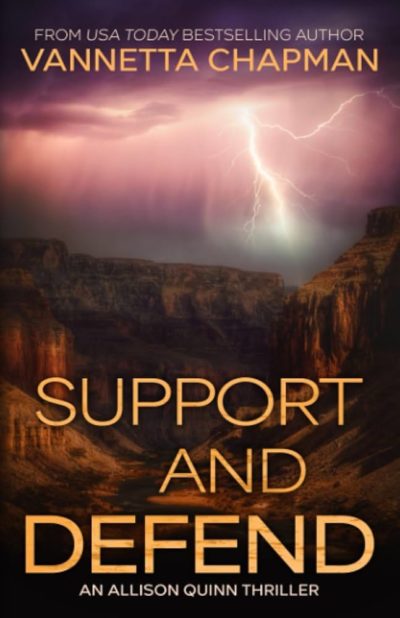 It’s funny. You wait ages for an action heroine novel set in Arizona, then two show up at once. Right on the heels of The Killing Game, we have this, which takes place almost entirely in this state’s most iconic location, the Grand Canyon. Unfortunately, this story falls well short of iconic. In fact, it struggles to reach mediocre, though in its defense, I didn’t realize while reading it, this is the second book in the series. I usually have a rule against starting series in the middle, because they tend to build on what has gone before. So perhaps the flaws here might be rectified if I’d read book one, Her Solemn Oath?
It’s funny. You wait ages for an action heroine novel set in Arizona, then two show up at once. Right on the heels of The Killing Game, we have this, which takes place almost entirely in this state’s most iconic location, the Grand Canyon. Unfortunately, this story falls well short of iconic. In fact, it struggles to reach mediocre, though in its defense, I didn’t realize while reading it, this is the second book in the series. I usually have a rule against starting series in the middle, because they tend to build on what has gone before. So perhaps the flaws here might be rectified if I’d read book one, Her Solemn Oath?




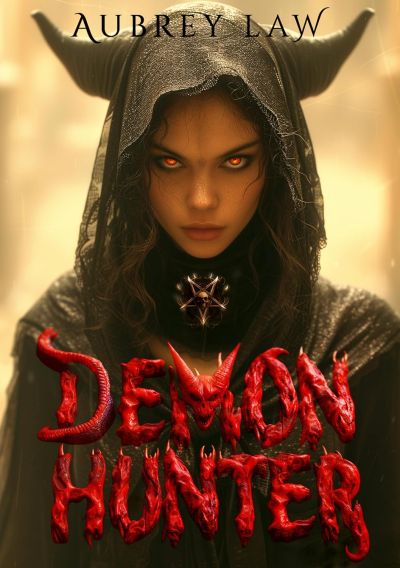 I wouldn’t call this great literature, by any stretch of the imagination. In fact, in many ways, it’s not very good. But I must admit: I was entertained, and was far from unhappy to realize that I’d picked up an omnibus of books 1-5 further into my reading list. I’m not sure I’m going to bother with reviewing those following installments; certainly not independently, it would be a bulk package, if at all. But I’m going to read them, and probably enjoy them. What’s interesting is, the author has created a protagonist who is, in many ways, a terrible person. But by then pitting them against arguably worse people, the reader is left on her side.
I wouldn’t call this great literature, by any stretch of the imagination. In fact, in many ways, it’s not very good. But I must admit: I was entertained, and was far from unhappy to realize that I’d picked up an omnibus of books 1-5 further into my reading list. I’m not sure I’m going to bother with reviewing those following installments; certainly not independently, it would be a bulk package, if at all. But I’m going to read them, and probably enjoy them. What’s interesting is, the author has created a protagonist who is, in many ways, a terrible person. But by then pitting them against arguably worse people, the reader is left on her side.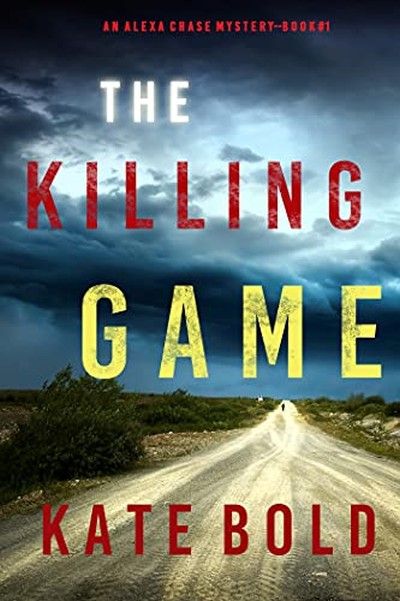 Bold is an incredibly prolific author, whose site lists eight separate series of novels, with a total of
Bold is an incredibly prolific author, whose site lists eight separate series of novels, with a total of 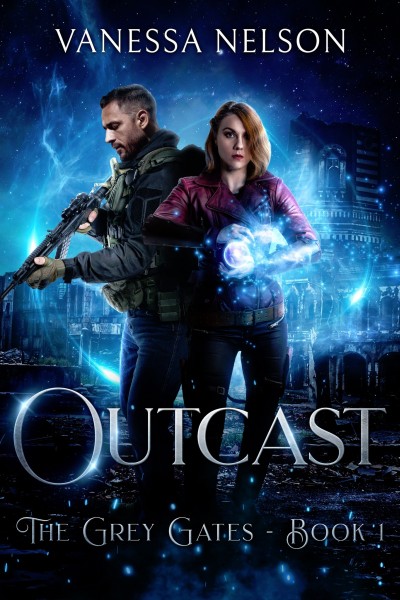 This is a solid slice of urban fantasy, taking place in a city surrounded on all sides by The Wild. This is more or less what it sounds like, a wilderness inhabited by a variety of monstrous creatures, most of which pose a significant threat to human life. They’re kept out of the city by magical barriers, but these are imperfect. When they fail, and the creatures enter the city, it’s up to the Marshals to hunt them down and contain the threat. One such is Max Ortis, though she only joined them after being kicked out of the Order, eight years previously.
This is a solid slice of urban fantasy, taking place in a city surrounded on all sides by The Wild. This is more or less what it sounds like, a wilderness inhabited by a variety of monstrous creatures, most of which pose a significant threat to human life. They’re kept out of the city by magical barriers, but these are imperfect. When they fail, and the creatures enter the city, it’s up to the Marshals to hunt them down and contain the threat. One such is Max Ortis, though she only joined them after being kicked out of the Order, eight years previously.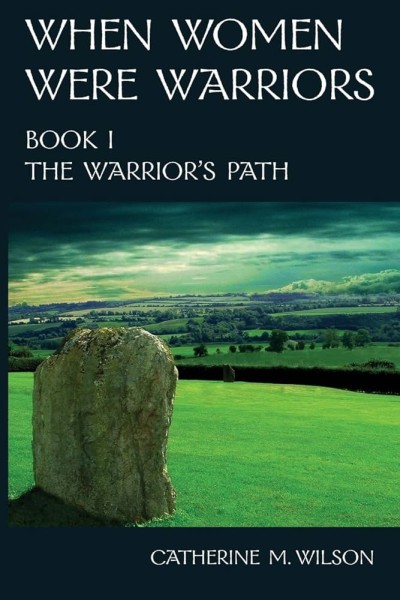 To be frank, I was expecting rather more action given the title here. Almost all of it, however, takes place “off-screen”, as it were, being described second-hand, rather than experienced. It makes sense in the context of the book, and it’s not badly written. But when you use the word “warrior” or derivations thereof, not once but twice in your title, it would seem fair to expect a higher quotient of… warrioring. I tagged this as fantasy, mostly because it clearly takes place elsewhere and/or elsewhen. It is fairly grounded e.g. no dragons or vampires, but certainly contains elements I would call mystical.
To be frank, I was expecting rather more action given the title here. Almost all of it, however, takes place “off-screen”, as it were, being described second-hand, rather than experienced. It makes sense in the context of the book, and it’s not badly written. But when you use the word “warrior” or derivations thereof, not once but twice in your title, it would seem fair to expect a higher quotient of… warrioring. I tagged this as fantasy, mostly because it clearly takes place elsewhere and/or elsewhen. It is fairly grounded e.g. no dragons or vampires, but certainly contains elements I would call mystical. There’s an interesting setting here, and the concept isn’t bad. However, the author is flat-out terrible at explaining things, and that derails the book badly. There were entire pages which seemed to be an written almost in another language, such was the level of technological gobbledygook spouted – and I write as someone who works in the field. Too often, it felt as though the writer was using technology as an alternative to magic: whatever needed to be done, there seemed to be some gadget, gizmo or app which the heroine or her allies could whip out to perform the necessary task.
There’s an interesting setting here, and the concept isn’t bad. However, the author is flat-out terrible at explaining things, and that derails the book badly. There were entire pages which seemed to be an written almost in another language, such was the level of technological gobbledygook spouted – and I write as someone who works in the field. Too often, it felt as though the writer was using technology as an alternative to magic: whatever needed to be done, there seemed to be some gadget, gizmo or app which the heroine or her allies could whip out to perform the necessary task.  About a year has elapsed since the events of the previous book. CIA agent Olivia Markham landed on her feet sufficiently, after the events in that one, to preserve her career with the Company; but since then, at her request, she’s been moved to a desk job. For most of the interim, she’s been in charge of an agency safehouse in Montenegro, which fronts as a free clinic for the town’s numerous foreign refugees, run by an NGO that’s not aware of the CIA connection. (The clinic work is real; when she was recruited by the agency in the first book, Olivia was a college pre-med student, and she has EMT certification.) She’s also fallen in love with a French medical doctor at the local hospital; the two are living together, and will get engaged in the first chapter. But …she’s about to cross paths with an Islamic terrorist mastermind from the previous book. Meanwhile, Italian spy Stasia Fiore is still investigating the theft of a Predator drone from the Italian military; and Capt. Beta Czerna is soon to be approached by a desperate woman who needs help in rescuing her sister from the clutches of a Polish crime lord who’s into sex trafficking (among other villainous things). Circumstances are about to converge these plot strands, and bring all three ladies together for a violent, high-stakes thrill ride.
About a year has elapsed since the events of the previous book. CIA agent Olivia Markham landed on her feet sufficiently, after the events in that one, to preserve her career with the Company; but since then, at her request, she’s been moved to a desk job. For most of the interim, she’s been in charge of an agency safehouse in Montenegro, which fronts as a free clinic for the town’s numerous foreign refugees, run by an NGO that’s not aware of the CIA connection. (The clinic work is real; when she was recruited by the agency in the first book, Olivia was a college pre-med student, and she has EMT certification.) She’s also fallen in love with a French medical doctor at the local hospital; the two are living together, and will get engaged in the first chapter. But …she’s about to cross paths with an Islamic terrorist mastermind from the previous book. Meanwhile, Italian spy Stasia Fiore is still investigating the theft of a Predator drone from the Italian military; and Capt. Beta Czerna is soon to be approached by a desperate woman who needs help in rescuing her sister from the clutches of a Polish crime lord who’s into sex trafficking (among other villainous things). Circumstances are about to converge these plot strands, and bring all three ladies together for a violent, high-stakes thrill ride.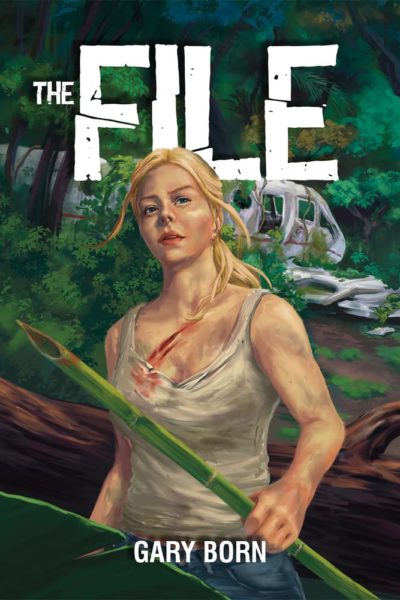 Not many novels come with a ringing endorsement from a former director of the CIA, but Gina Haspel calls this “A thoroughly enjoyable, engrossing thriller.” Argue with her, and she’ll send you an exploding cigar, or something. While it certainly isn’t bad, the rating above reflects its likely moderate appeal for readers here. A general audience might be more impressed, especially with regard to the second half, where the heroine becomes more of a passenger. Things begin at the very end of World War II with a flight out of Berlin carrying documents intended to secure the future of the Reich. It doesn’t reach its destination, crashing in the depths of the African jungle.
Not many novels come with a ringing endorsement from a former director of the CIA, but Gina Haspel calls this “A thoroughly enjoyable, engrossing thriller.” Argue with her, and she’ll send you an exploding cigar, or something. While it certainly isn’t bad, the rating above reflects its likely moderate appeal for readers here. A general audience might be more impressed, especially with regard to the second half, where the heroine becomes more of a passenger. Things begin at the very end of World War II with a flight out of Berlin carrying documents intended to secure the future of the Reich. It doesn’t reach its destination, crashing in the depths of the African jungle. That trait got her in trouble on her latest mission. It wasn’t supposed to be a hit; she was simply posing as the glamorous mistress of a drug dealer, delivering money for him to a Middle Eastern crime boss. But (as we learn along with her, at the debriefing in the first chapter) her meeting was compromised by an unknown leak in the CIA, who’d tipped the bad guys off as to who she was. They’d decided to test the tip by setting up a situation where she’d have to act to try to rescue a 12-year-old sex trafficking victim, figuring that she could then easily be dealt with, since she’d come unarmed. Unhappily for them, Fortune’s quite adept at improvising a weapon when she has to; though she doesn’t care much for high heels, she dispatched the head honcho with a stiletto heel on the shoes she was wearing, and got away clean, presumably with the 12-year-old. (We learn about this only in a terse second-hand report; I’d have loved to read it in real time!) Now, the deceased’s brother Ahmad, also a big-time crime lord, has put her picture all over the Dark Web, with a million-dollar price on her head (ten million, if she can be delivered to him alive to be tortured).
That trait got her in trouble on her latest mission. It wasn’t supposed to be a hit; she was simply posing as the glamorous mistress of a drug dealer, delivering money for him to a Middle Eastern crime boss. But (as we learn along with her, at the debriefing in the first chapter) her meeting was compromised by an unknown leak in the CIA, who’d tipped the bad guys off as to who she was. They’d decided to test the tip by setting up a situation where she’d have to act to try to rescue a 12-year-old sex trafficking victim, figuring that she could then easily be dealt with, since she’d come unarmed. Unhappily for them, Fortune’s quite adept at improvising a weapon when she has to; though she doesn’t care much for high heels, she dispatched the head honcho with a stiletto heel on the shoes she was wearing, and got away clean, presumably with the 12-year-old. (We learn about this only in a terse second-hand report; I’d have loved to read it in real time!) Now, the deceased’s brother Ahmad, also a big-time crime lord, has put her picture all over the Dark Web, with a million-dollar price on her head (ten million, if she can be delivered to him alive to be tortured). There’s something to be said for sparse simplicity, and this delivers on that concept in spades. Except for occasional flashbacks, the entire things takes place in one location: a facility somewhere in Europe. It’s where Cassie ends up, locked in a cage, after being abducted while on a trip from Britain, intending to find herself. She’s then deposited in a hall and made to fight for the amusement, gambling or whatever of online spectators. She starts off facing animals, but through pharmaceutical treatment, her strength, speed and savagery are enhanced, and the opponents – both fauna and, eventually, her own species too – become more vicious. The shock collar around her neck ensures her compliance.
There’s something to be said for sparse simplicity, and this delivers on that concept in spades. Except for occasional flashbacks, the entire things takes place in one location: a facility somewhere in Europe. It’s where Cassie ends up, locked in a cage, after being abducted while on a trip from Britain, intending to find herself. She’s then deposited in a hall and made to fight for the amusement, gambling or whatever of online spectators. She starts off facing animals, but through pharmaceutical treatment, her strength, speed and savagery are enhanced, and the opponents – both fauna and, eventually, her own species too – become more vicious. The shock collar around her neck ensures her compliance.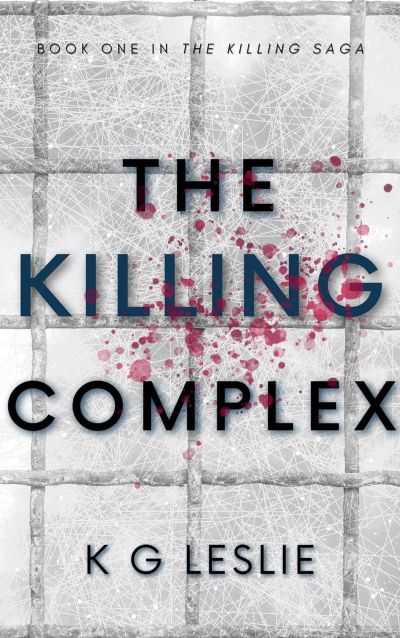 In the early going, much of this unfolds inside Cassie’s head, as she goes through what perhaps seems inspired by the five stages of grief, from rejecting the reality of her predicament, through anger, and ending up in a personal commitment to do whatever is necessary in order to survive – even if this comes at the cost of her own humanity. But just when she’s on the edge of becoming a soulless killing machine, she’s relocated, and placed next to another prisoner, Thomas. He was also abducted, but more recently, so hasn’t been ground down by his situation yet, and his optimism reignites Cassie’s own interest in life. But is everything quite what it seems, or are there other agendas at work?
In the early going, much of this unfolds inside Cassie’s head, as she goes through what perhaps seems inspired by the five stages of grief, from rejecting the reality of her predicament, through anger, and ending up in a personal commitment to do whatever is necessary in order to survive – even if this comes at the cost of her own humanity. But just when she’s on the edge of becoming a soulless killing machine, she’s relocated, and placed next to another prisoner, Thomas. He was also abducted, but more recently, so hasn’t been ground down by his situation yet, and his optimism reignites Cassie’s own interest in life. But is everything quite what it seems, or are there other agendas at work?